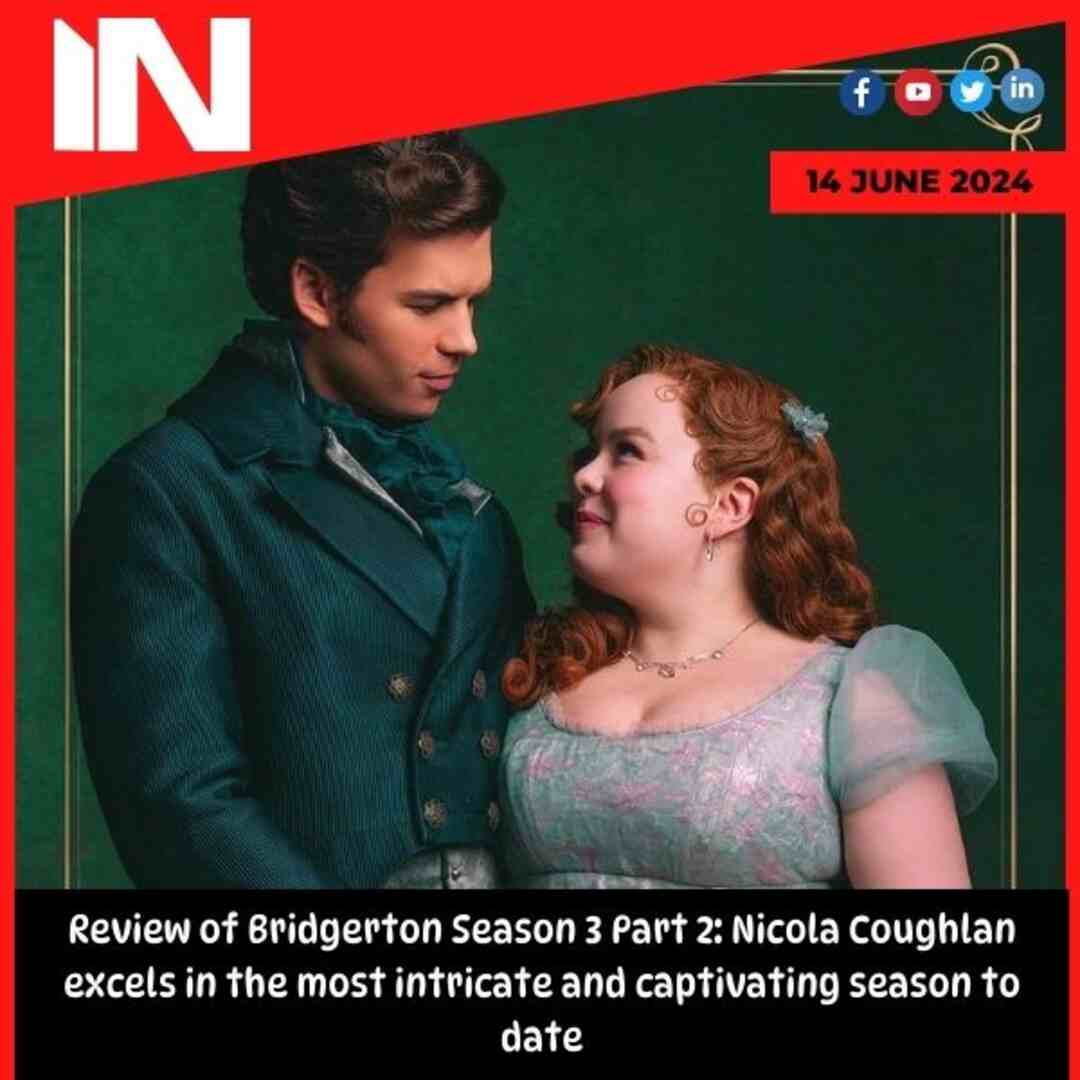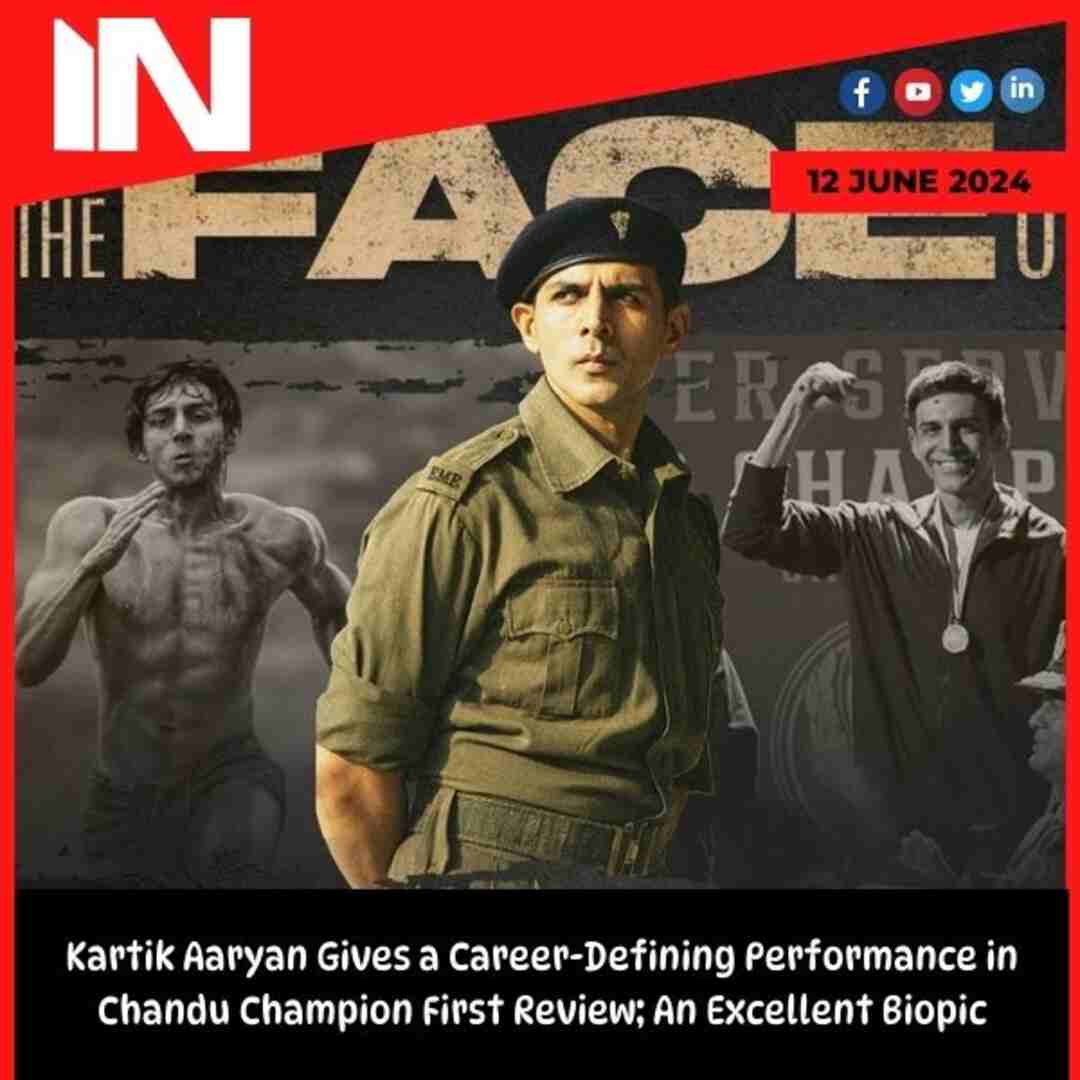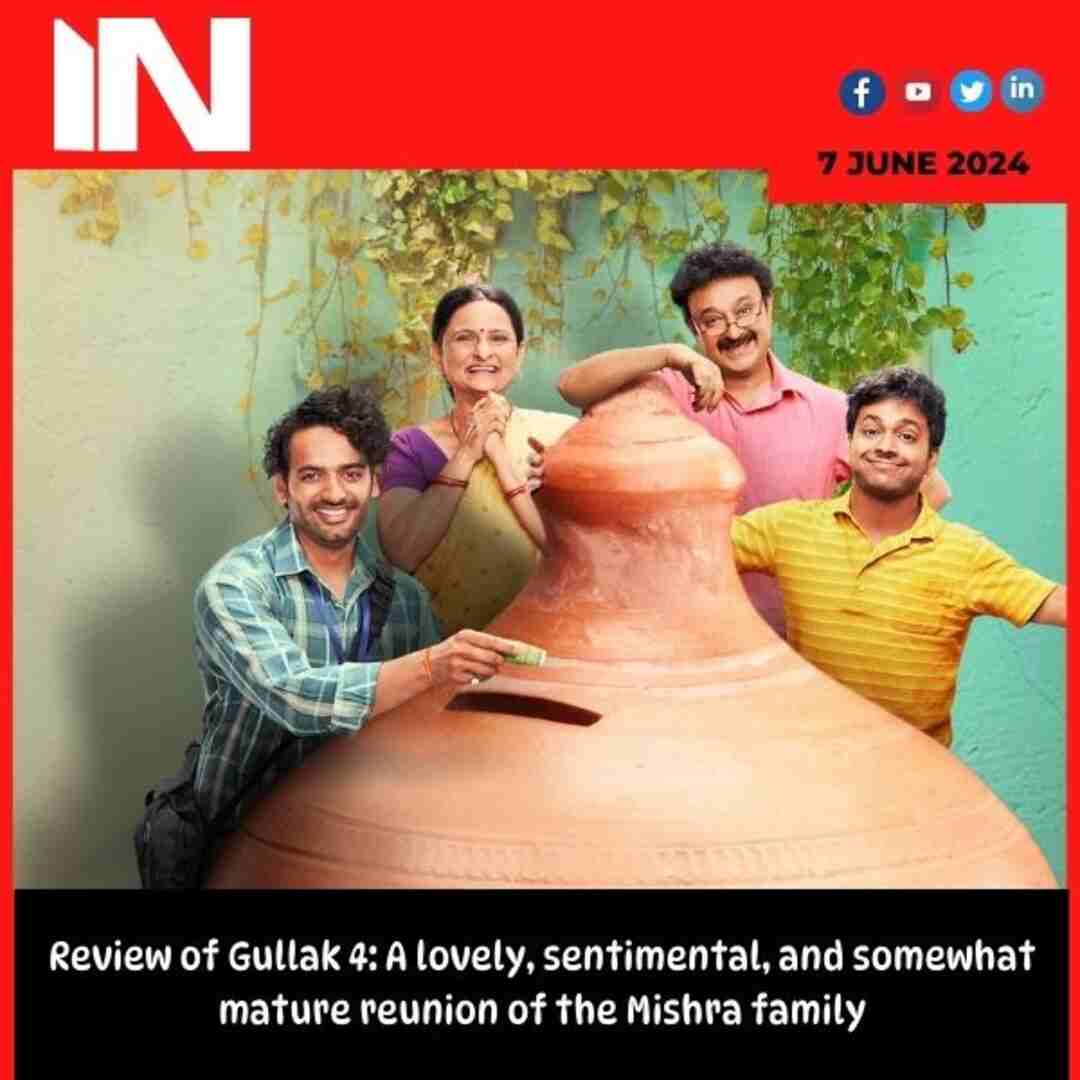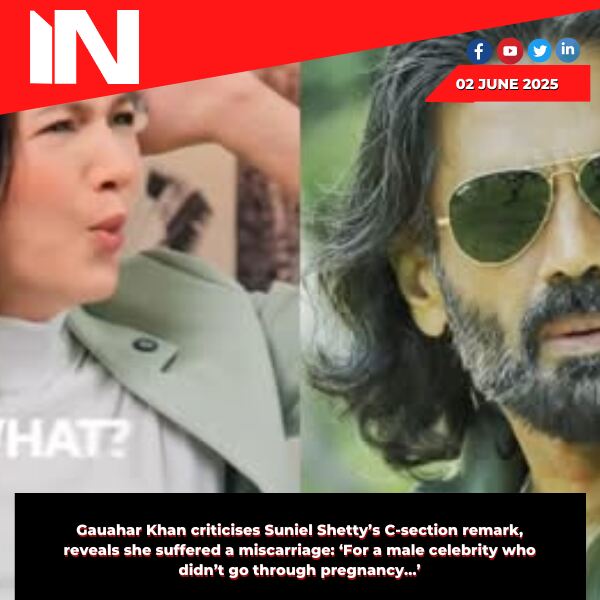Trending
A Story About Laxmi Kant Pyarelal , The Legendry Musicians
Published
3 years agoon
By
Digital Team
Laxmikant
Laxmikant Shantaram Kudalkar was born on the day of Laxmi Pujan, Dipawali on 3 November 1937. Probably, because of the day of his birth, his parents named him Laxmikant, after the goddess Laxmi. He spent his childhood amidst dire poverty in the slums of Vile Parle (East) in Mumbai. His father died when he was a child. Because of the poor financial condition of the family he could not complete his academic education either. Laxmikant’s father’s friend, a musician himself, advised Laxmikant and his elder brother to learn music. Accordingly, Laxmikant learned to play the mandolin and his elder brother learned to play the tabla. He spent two years in the company of the well-known mandolin player Hussain Ali. He began organising and performing in Indian Classical instrumental music concerts to earn some money. Later, in the 1940s, he also learned mandolin from Bal Mukund Indorker and violin from Husnalal (of the Husanlal Bhagatram fame). Laxmikant began his film career as a child actor in the films Bhakt Pundalik (1949) and Aankhen (1950). He also acted in some Gujarati films.
Pyarelal
Pyarelal Ramprasad Sharma (born 3 September 1940) is the son of a renowned trumpeter Pandit Ramprasad Sharma (popularly known as Babaji), who taught him the basics of music. He started learning violin at the age of 8 and practised it 8 to 12 hours daily. He learnt to play violin from a Goan musician named Anthony Gonsalves. The song “My Name Is Anthony Gonsalves” from the movie Amar Akbar Anthony is regarded as a tribute to Mr. Gonsalves (the movie had music by Laxmikant–Pyarelal). By the age of 12, his family’s financial condition had deteriorated, which in turn forced him to earn money by playing in studios. Pyarelal then used to frequent and play the violin in studios such as Ranjit Studios, to earn money for his family. Pyarelal’s real life brother Gorakh Sharma played guitar for various songs composed by the duo Lakshmikant Pyarelal.
In an interview with Annu Kapoor recently, he has mentioned that he was quite an adept violinist and expert in western form of music. Pyarelal even thought to try his fortune in the West and wanted to become a regular orchestra player with a renowned group. Lakshmikant dissuaded him and then they started the amazing journey of music for Indian cinema.
Formation of Music duo
When Laxmikant was about 10 years old, he once played mandolin in a Lata Mangeshkar concert in Radio Club, Colaba. Lata was so impressed that she talked to him after the concert.
Laxmikant and Pyarelal met at Sureel Kala Kendra, a music academy for children, run by the Mangeshkar family. After she came to know about their financially poor backgrounds, Lata recommended their names to music directors like Naushad, Sachin Dev Burman and C. Ramchandra. Similar financial backgrounds and age made Laxmikant and Pyarelal very good friends. They used to spend long hours at the recording studios, sometimes getting work for each other and even playing together whenever they got the opportunity.
Pyarelal often used to frequent the Bombay Chamber Orchestra and the Paranjoti Academy, where he would perfect his skills in the company of Goody Seervai, Coomi Wadia, Mehli Mehta and his son, Zubin Mehta. Laxmikant–Pyarelal were not content with the payments being made to them for their music, so they decided to go to Madras (now Chennai). But, it was the same story there. So, they returned. Once Pyarelal decided to leave India and go to Vienna to play for symphony orchestras, just like Zubin. However, he stayed back at Laxmikant’s insistence. Some of Laxmikant–Pyarelal’s colleagues at this time included Pandit Shivkumar Sharma (Santoor) and Pandit Hariprasad Chaurasia (flute). Later, Shivkumar and Hariprasad also ventured into Hindi Cinema as Shiv-Hari. Laxmikant–Pyarelal worked with almost all well-reputed music directors (with the exception of O. P. Nayyar and Shankar–Jaikishan though Laxmikant used to play mandolin in Shankar Jaikishan songs) of the 1950s. In 1953, they became assistants to Kalyanji-Anandji and worked with them as assistants till 1963. They worked as music arrangers for many music directors including Sachin Dev Burman (in Ziddi) and also for his son Rahul Dev Burman (in his first film Chhote Nawab). Laxmikant–Pyarelal and R D Burman remained very good friends, even when Laxmikant–Pyarelal started giving music independently. R D Burman played mouth organ for the two of songs of Dosti. Laxmikant once made a guest appearance playing himself as a composer of the Song “Dil Ki Baat” in Teri Kasam (1982), which had music by R D Burman.
Music caree
In their early days, Laxmikant–Pyarelal’s music was very similar to Shankar–Jaikishan’s music, as Laxmikant was a great fan of theirs. Once Shankar even changed his orchestration to make sure that his music did not sound like Laxmikant–Pyarelal’s. Laxmikant–Pyarelal’s first film as music directors was not released. The first released movie which featured them as music directors was Babubhai Mistry’s Parasmani (1963), which was a costume drama. All the songs of the film became immensely popular, esp. “Hansta Hua Nurani Chehara”, “Wo Jab Yaad Aaye” and “Mere Dil Main Halki Si”. Throughout their tenure as music directors, Laxmikant–Pyarelal only used A-grade singers. Their mentors, Lata Mangeshkar and Mohammad Rafi agreed to sing for them in spite of low budgets, and Laxmikant–Pyarelal always remained indebted to them. In fact, all three, Lata, Mohammad Rafi and Asha Bhosle have sung the highest number of songs in their career for Laxmikant–Pyarelal. They continued to give patronage to Mohammed Rafi, sometimes against filmmakers’ wishes. They had a great rapport with Kishore Kumar as well. Kishore Kumar sang the most songs (402) for L-P among all male singers, followed by Rafi (about 388 songs).
Laxmikant–Pyarelal hit the big time with Rajshri Productions’ 1964 film Dosti. The film had two newcomer heroes who never became popular, and the film was a success due to its music. Songs like “Chahoonga Main Tujhe Shaam Savere” and “Rahi Manwa” became very popular. At that time, many used to think that there was a single person by the name of Laxmikant Pyarelal. Laxmikant–Pyarelal won their first Filmfare Best Music Director Award for the movie, ahead of stalwarts like Shankar–Jaikishan (for Sangam) and Madan Mohan (for Woh Kaun Thi?). Then came Lootera, a superhit musical non-star cast film, which is remembered only because of Lata Manageshkar’s superhit songs with Laxmikant–Pyarelal.
|In 1966 L-P started cementing their place in Hindi film music. L-P’s first musical hit film, with a big star cast, Aaye Din Bahar Ke was released, followed by Pyar Kiye Jaa. Even in films with lesser-known actors, L-P scored hit music: in Sati Savitri (Songs:”Tum Gagan Ke Chandrama Ho”, “Jeevan Dor Tumhi Sang Bandhi”, “Kabhi To Miloge”); in Sant Gyaneshwar (Songs: “Jyot Se Jyot Jagate Chalo”, “Khabar More Na Line”); in Hum Sab Ustaad Hai (Songs: “Pyar Batate Chalo”, “Ajanabi Tum Jane Pehachane Se”); in Mr. X in Bombay (Songs: “Mere Mehboob Quayamat Hogi”, “Chali Re Chali Re Gori”, “Khoobsurat Haseena”); and in Shriman Fantush..(Songs: “Sultana Sultana Tu Na Ghabarana”, “Yeh Dard Bhara Afasana”).
In 1967, L-P consolidated their position in the Hindi film industry with a series of hits, one after another. Non star cast film Farz was L-P’s first golden jubilee musical hit, followed by big star cast films such as Anita, Shagird, yet another Golden Jubilee hit, Patthar Ke Sanam, Night in London, Jaal and another evergreen musical hit Milan. L-P received their second Filmfare Trophy for Milan without any stiff competition.
The rise of Laxmikant–Pyarelal, Rahul Dev Burman, and Kalyanji-Anandji marked the end of an old era of Bollywood music, which had belonged to Jaidev, Shankar–Jaikishan, Sachin Dev Burman, Naushad, C. Ramchandra, Khayyam, Madan Mohan, O. P. Nayyar, Roshan and others. Big film producing names, such as Prasad Productions, Rajshri Productions, J. Om Prakash, Raj Khosla, Manoj Kumar, Ramanand Sagar, Madan Mohla, Mohan Sahagal, V.Shantaram, Raj Kapoor, Yash Chopra, Manmohan Desai, Subhash Ghai and many more, started replacing their regular music directors and preferred Laxmikant–Pyarelal on a regular basis, and in return L-P have given outstanding music to justify the replacement among the big names.
One of the most important associations that the duo developed was with lyricist Anand Bakshi. The team of Laxmikant–Pyarelal and lyricist Anand Bakshi churned out some of the most popular songs in Hindi Cinemas history. The combo composed songs for more than 250 movies. Anand Bakshi was the lyricist who wrote the maximum number of texts Laxmikant–Pyarelal gave music to. He was actually the lyricist for all the films for which Laxmikant–Pyarelal won Filmfare Awards, except their very first award.
Actor Rajesh Khanna kept Laxmikant–Pyarelal as music director for 26 of his films.
Another great collaboration was with Asha Bhonsle. She has sung many hits under their baton. “Dhal Gaya Din” (with Rafi) in Humjoli (1970) became a superhit. “Roz Roz Rozy” from Khilona (1970), “Bane Bade Raja” from Abhinetri (1970), “Hungama Ho Gaya” and “Balma Hamar Motorcar Leke Aayo” from Anhonee (1974), “Aye Mere Nanhe Gulfam” from Jagriti (1977), “Aaiye Shauk Se Kahiye” from Parvarish (1977), “Teri Rab Ne” from Suhaag (1979), “Ek Hasina Thi” from Karz (1980), “Are Bhaago Are Dauro” from Bandish (1980), “Man Kyun Behka Re” from Utsav (1985), “Balram Ne Bahut Samjhaya” from Ram Balram (1990) etc. They recorded the second most songs with Asha Bhosle. In the years 1980–1986, most of their songs would be sung by Asha only. “Hungama Ho Gaya” from Anhonee was a chartbuster and Asha was nominated for a Filmfare Award in 1974. The song was later re-recorded for the 2014 film Queen, with additional voice by Arijit Singh, it again hit the top charts and became a superhit. “Man Kyun Behka Re” with Lata was also a hit and several blockbusters by L-P had Asha as lead voice in films such as Suhaag, Vakil Babu, Dostana, Adha Din Adhi Raat, Loha and Anhonee etc. to name a few. L-P scored for a Nagarjuna (actor) “Telugu” Film Majnu (1987 film) which remained a musical hit.
Style of music
Laxmikant–Pyarelal composed Indian classical music as well as Western music; they were most popular for their folk tunes and semi-classical music. For Shagird, they composed Rock-n-Roll-style melodies, and in Karz the music is closer to disco. For this film they wrote a Westernised version of a Ghazal, “Dard-e-dil Dard-e- jigar”, and they received the Filmfare Best Music Director Award for the year.
Binaca Geet Mala
LP dominated the Weekly Hindi Film songs Countdown programme Binaca Geet Mala, the most popular musical radio programme of its time. Its first broadcast was in 1953 by Radio Ceylon and its host was Ameen Sayani. The Binaca Geet Mala ranked the most popular Bollywood film songs according to sales in select shops in select cities.
In the third quarter of 1963, L-P’s first ever song “Hansta Hua Nurani Chehra” from Parasmani hit the “Binaca Geet Mala”. After that, L-P’s songs were regularly and prominently aired on “Binaca Geet Mala”. There used to be sixteen songs in each of the weekly “Binaca Geet Mala” programme, more than half the numbers of the songs were of L-P. There are certain weekly Binaca Geet Mala programmes in which more than 13 out of 16 songs of LP were broadcast when LP were right on top of their career. BGM used to broadcast annual (Vaarshik) programme giving the orders of the top 32 songs of every year. In this programme also, L-P had the upper hand. Not only that, on average, there used to be at least 15 songs from L-P, also about 50% of the songs between top to tenth position. Laxmikant–Pyarelal have 245 numbers of Binca Geetmala Final Songs…(The songs compiled at the end of every year, to measure the popularity)..The highest numbers of the songs by any music directors appeared in Binaca Geetmala Finals. Apart from Laxmikant–Pyarelal have the highest numbers of the TOP songs for 11 years. The Binaca Geet Mala records show that Laxmikant–Pyarelal have completely dominated this musical programme.
Popular top songs
| Year | Film | Song | Singer(s) | |
| 1964 | Dosti | “Rahi Manwa Dukh Ki Chinta” | Lata Mangeshkar, Mohammad Rafi | |
| 1967 | Milan | “Sawan Ka Mahina” | Lata Mangeshkar, Mukesh | |
| 1968 | Shagird | “Dil Vil Pyar Vyar” | Lata Mangeshkar | |
| 1969 | Intaquam | “Kaise Rahu Chup” | Lata Mangeshkar | |
| 1969 | Aa Jaane Jaan | Lata Mangeshkar | ||
| 1969 | Do Raaste | “Bindiya Chamakegi” | Lata Mangeshkar | |
| 1971 | Jal Bin Machhli Nritya Bin Bijli | “Jo Main Chali” | Lata Mangeshkar | |
| 1972 | Shor | “Ek Pyar Ka Naghma Hai” | Lata Mangeshkar, Mukesh | |
| 1973 | Manchali | “O Manchali Kaha Chali” | Kishore Kumar | |
| 1973 | Bobby | “Hum Tum Ek Kamre Mein Band Ho” | Lata Mangeshkar, Shailendra Singh | |
| 1974 | Roti Kapda Aur Makaan | “Mehngai Maar Gayi” | Lata Mangeshkar, Jani Babu Quwal, Mukesh & Chanchal | |
| 1977 | Amar Akbar Anthony | “Humko Tumse Ho Gaya Hai Pyaar” | Kishore Kumar,Lata Mangeshkar, Mohammad Rafi & Mukesh | |
| 1977 | Dream Girl | “Dream Girl” | Kishore Kumar | |
| 1980 | Sargam | “Dafali Wale” | Lata Mangeshkar, Mohammed Rafi | |
| 1980 | Dostana | “Salamat Rahe Dostana Humara” | Kishore Kumar & Mohammed Rafi | |
| 1980 | Karz | “Dard-e-Dil Dard-e-Jigar” | Mohammed Rafi | |
| 1981 | Ek Duuje Ke Liye | “Tere Mere Beech Mein“ | Lata Mangeshkar & S. P. Balasubrahmanyam | |
| 1982 | Prem Rog | “Yeh Galiyan Yeh Chaubara” | Lata Mangeshkar | |
| 1983 | Hero | “Tu Mera Hero Hai” | Manhar Udhas, Anuradha Paudwal | |
| 1984 | Utsav | “Saanjh Dale” | Suresh Wadkar | |
| 1985 | Sanjog | “Yashoda Ka Nandlala” | Lata Mangeshkar | |
| 1986 | Naam | “Chithi Aayi Hai” | Pankaj Udhas | |
| 1986 | Nagina | “Main Teri Dushman” | Lata Mangeshkar | |
| 1987 | Mr India | “Hawa Hawai” | Kavita Krishnamoorthy | |
| 1987 | “Kaate Nahin Katte” | Kishore Kumar & Alisha Chinoy | ||
| 1987 | Majnu (1987 film) | “Idi Toli Raatri” in “(Telugu)” | S. P. Balasubrahmanyam | |
| 1988 | Tezaab | “Ek Do Teen“ | Amit Kumar & Alka Yagnik | |
| 1988 | “So Gaya Yeh Jahan” | Nitin Mukesh, Shabbir Kumar & Alka Yagnik | ||
| 1989 | Chaalbaaz | “Na Jaane Kahan Se Aayi Hai” | Amit Kumar & Kavita Krishnamoorthy | |
| 1989 | Ram Lakhan | “My Name Is Lakhan” | Mohammad Aziz, Anuradha Paudwal, Nitin Mukesh, Anuradha Sriram | |
| 1989 | “Bada dukh dina” | Lata Mangeshkar | ||
| 1990 | Kroadh | “Bombay Bombay” | Amit Kumar & Mohammad Aziz | |
| 1991 | Saudagar | “Ilu Ilu” | Manhar Udhas, Kavita Krishnamurthy, Udit Narayan & Sukhwinder Singh | |
| 1991 | Hum | “Jumma Chumma De De” | Sudesh Bhonsle & Kavita Krishnamurthy | |
| 1992 | Khuda Gawah | “Tu Mujhe Kabool” | Lata Mangeshkar, Mohammed Aziz & Kavita Krishnamurthy | |
| 1993 | Khalnayak | “Choli Ke Peeche Kya Hai“ | Alka Yagnik, Ila Arun | |
| 1993 | Aashiq Awara | “Main Hoon Aashiq Aashiq Awara” | Udit Narayan | |
| 1997 | Poonilamazha | “Aatu Thottilil” | M.G.Sreekumar, K.S.Chithra | |
| 1998 | Deewana Mastana | “O Mummy Mummy O Daddy Daddy “ | Udit Narayan |
You may like
Trending
Thug Life Movie Review & Release Live Updates: Kamal Haasan’s Bold New Venture – Is it the Hit We Expected?
Published
1 month agoon
June 5, 2025By
India
Kamal Haasan’s Bold New Venture
Kamal Haasan, the versatile legend of Indian cinema, is back on the big screen with his latest thriller, Thug Life. After weeks of anticipation and a gripping promotional campaign, fans have eagerly awaited the release of this high-octane action drama. The movie, directed by debutant director Arvind Rao, promises to showcase Haasan in a never-before-seen avatar, leading to sky-high expectations. So, does Thug Life live up to the hype? In this blog, we bring you an in-depth review of the film, along with live updates from the first-day box office response. Is Thug Life the next blockbuster hit Kamal Haasan fans have been waiting for?
A Thrilling First Look: What’s Thug Life All About?
At its core, Thug Life is an action-packed thriller that explores the lives of notorious criminals, their complex relationships with law enforcement, and the grey areas of morality. Kamal Haasan plays Vikram Singh, a larger-than-life anti-hero with a troubled past who finds himself caught between the law and the underworld. The film also stars an ensemble cast, including the brilliant actress Simran, who plays a key role as Vikram’s moral compass.
From the first teaser, it’s clear that Thug Life is set against the backdrop of a gritty urban world, filled with explosive action sequences, intense drama, and gripping twists. The film promises to delve deep into themes of justice, vengeance, and personal redemption. Kamal’s performance, combined with the intriguing premise, has set the stage for a grand theatrical release.
Plot and Direction: The Power of Storytelling
Thug Life is crafted in a fast-paced manner, with suspense building at every corner. The screenplay is written in a way that constantly keeps the audience on edge, making them question the true intentions of the characters. The film’s direction by Arvind Rao has been appreciated for its bold approach in showcasing complex characters and real-world dilemmas.
Kamal Haasan, known for his ability to transform into any character, does not disappoint here. He brings his unparalleled experience to the table, portraying a character who walks the thin line between good and evil. His performance is undoubtedly one of the highlights of the film.
Simran’s portrayal of Maya, a fierce and intelligent woman who challenges Vikram’s decisions, complements Haasan’s character beautifully. Their chemistry on screen elevates the emotional stakes, making the action sequences more impactful.
Is the Action Worth the Hype?
The action sequences in Thug Life are nothing short of spectacular. From high-speed chases to hand-to-hand combat, the film delivers thrills on every front. The choreography, especially in the fight scenes, stands out for its fluidity and precision. Kamal Haasan, known for his commitment to physical transformation, performs many of the stunts himself, showcasing his dedication to the craft.
One of the standout moments is a tense sequence set in an abandoned warehouse where Vikram faces off against a group of armed criminals. The scene is intense, and the cinematography captures the chaos and confusion, making it a thrilling experience.
Music & Sound Design: A Powerful Impact
The film’s music, composed by the talented Anirudh Ravichander, perfectly complements the high-octane action and dramatic moments. Tracks like “Thug Life Anthem” and “Vikram’s Vengeance” have already started to trend on music platforms, and it’s easy to see why. The music amplifies the tension and excitement, enhancing the overall cinematic experience.
The sound design deserves special mention. Whether it’s the ominous hum during a quiet moment or the deafening roar during action sequences, the sound elevates the tension and immerses the audience in the world of Thug Life.
Live Box Office Updates: A Promising Start
As the clock strikes midnight, audiences flock to theaters for the first showings of Thug Life. Early reviews on social media are buzzing with excitement, praising Kamal Haasan’s return to form and the gripping narrative. The film’s powerful action sequences and engaging storyline seem to have hit the right chord with fans.
Box office analysts predict a solid opening for Thug Life. With strong pre-release bookings, particularly in Chennai, Mumbai, and Bengaluru, the film is set for a roaring start. Kamal Haasan’s massive fan base is ensuring long lines at theaters, with advance bookings already sold out in several locations.
Reports from the first-day collections are already rolling in, and the numbers look promising. It’s expected that Thug Life will gross over ₹15 crore on its opening day, making it one of the highest openings for Kamal Haasan in recent years.
The Verdict: Is Thug Life Impressive?
Without a doubt, Thug Life is a powerful cinematic experience that showcases Kamal Haasan in peak form. The film succeeds in offering a gripping storyline, memorable characters, and a stellar performance from its lead. The action sequences and emotional depth set it apart from typical masala entertainers, and its themes resonate with today’s audience.
While the plot may feel familiar to those who have watched similar thrillers, Thug Life distinguishes itself with its sharp direction, compelling performances, and high-quality production values. If you’re a fan of action films with emotional depth, this is a movie you won’t want to miss.
Rating: 4/5 – A must-watch for Kamal Haasan fans and action movie lovers alike.
Live Updates: Is Thug Life Making Waves?
10:00 AM – First Show Starts:
The first show has begun! Fans are already praising Kamal Haasan’s power-packed performance. Social media is flooded with reactions as people seem impressed with the intense action sequences.
12:30 PM – Early Box Office Numbers:
Thug Life is seeing a great response at the box office. Early reports show packed theaters in Chennai, Hyderabad, and Bengaluru. Looks like Kamal Haasan is in for a hit!
3:00 PM – Social Media Buzz:
The film’s action and Kamal Haasan’s performance are trending on Twitter and Instagram. Fans are calling it his best role in years. Many are also impressed with the music by Anirudh.
6:00 PM – Fan Reactions:
The film continues to dominate social media as fans share videos from theaters. There’s a lot of love for the film’s emotional depth, making it clear that Thug Life is a crowd favorite.
Final Thoughts:
With such a fantastic opening, Thug Life looks set to make waves at the box office. Kamal Haasan’s stellar performance and the film’s impressive direction ensure that this thriller is more than just a typical action flick – it’s a cinematic experience.

.jpg)
Sufi Motiwala describes Karan Kundera’s expulsión injusta en The Traitors, asegura haber mantenido un ‘no vínculo’ con Uorfi; anticipa un sorpresivo giro: ‘Un competidor recibe un funeral’
.jpg)
Kesari Chapter 2: Accidentally, Akshay Kumar’s drama in a courtroom reveals Bollywood’s manejo de sexual misconduct.
.jpg)
They said Vidhu Vinod Chopra bribed me with Rs 8 crore to not make OMG’: Director Umesh Shukla opens up on PK comparisons
.jpg)
Stranded in Israel amid airstrikes, Caitlyn Jenner sips wine in bomb shelter and says, ‘Pray for us’
.jpg)
After three years, Alia Bhatt and Ranbir Kapoor’s six-story Bandra home, valued at Rs 250 crore, is ready, and fans exclaim, “Gate nahi hai.” Observe

Paresh Rawal responds to a fan who refers to him as the “hero” of Hera Pheri 3 and asks him to reevaluate his departure: “There are three heroes.”
.jpg)
Housefull 5 Day 3 Box Office Collection: ₹91 Cr Milestone for Akshay Kumar
.png)
Four years after her divorce, did Samantha Ruth Prabhu get rid of her tattoo with the Naga Chaitanya link? Supporters are persuaded

Thug Life Movie Review & Release Live Updates: Kamal Haasan’s Bold New Venture – Is it the Hit We Expected?
.jpg)
Sufi Motiwala describes Karan Kundera’s expulsión injusta en The Traitors, asegura haber mantenido un ‘no vínculo’ con Uorfi; anticipa un sorpresivo giro: ‘Un competidor recibe un funeral’
.jpg)
Kesari Chapter 2: Accidentally, Akshay Kumar’s drama in a courtroom reveals Bollywood’s manejo de sexual misconduct.

Thug Life Movie Review & Release Live Updates: Kamal Haasan’s Bold New Venture – Is it the Hit We Expected?

The anime Tokyo Revengers is back with a sequel: view the promotional trailer

Deadpool and Wolverine might shatter box office records, which would be unprecedented for an R-rated film.

Review of Bridgerton Season 3 Part 2: Nicola Coughlan excels in the most intricate and captivating season to date

Kartik Aaryan Gives a Career-Defining Performance in Chandu Champion First Review; An Excellent Biopic

Watch the trailer for Kota Factory 3 here. Fans of Jeetu Bhaiya say they’re not ready for it to end.

Kartik Aaryan on overcoming the label of “outsider”: It will remain with me, and that is alright with me.

When Does Vishwak Sen’s Film Gangs of Godavari OTT Come Out? What Platform Does It Come Out On?

Review of Gullak 4: A lovely, sentimental, and somewhat mature reunion of the Mishra family
Trending
-
%20(2).jpg)
%20(2).jpg) Celebrity Lifestyle1 month ago
Celebrity Lifestyle1 month agoKareena Kapoor reveals her new schedule; says she has dinner at 6pm, lights out at 9:30 pm: ‘Saif, the kids and me, we’re all cooking together’
-

 Celebrity News2 months ago
Celebrity News2 months agoAccording to Urvashi Rautela, Leonardo DiCaprio referred to her as the Queen of Cannes; online users refer to him as the “first Hollywood star to
-

 Web Series1 month ago
Web Series1 month agoFirst impression of a good boy: Don’t let “Pouty” Park Bo Gum deceive you; he’s throwing punches of his career.
-

 Trending1 month ago
Trending1 month agoThug Life Movie Review & Release Live Updates: Kamal Haasan’s Bold New Venture – Is it the Hit We Expected?
-
.png)
.png) Tollywood1 month ago
Tollywood1 month agoFour years after her divorce, did Samantha Ruth Prabhu get rid of her tattoo with the Naga Chaitanya link? Supporters are persuaded
-

 Trending1 month ago
Trending1 month agoGauahar Khan criticises Suniel Shetty’s C-section remark, reveals she suffered a miscarriage: ‘For a male celebrity who didn’t go through pregnancy…’
-
%20(1).jpg)
%20(1).jpg) Hailee Steinfeld1 month ago
Hailee Steinfeld1 month agoActor Hailee Steinfeld marries Buffalo Bills quarterback Josh Allen in dreamy ceremony
-
.jpg)
.jpg) Entertainment1 month ago
Entertainment1 month ago‘Deepika Padukone was in a relationship with me for two years, I broke up with her,’ says Muzammil Ibrahim: ‘We went on dates in a rickshaw’